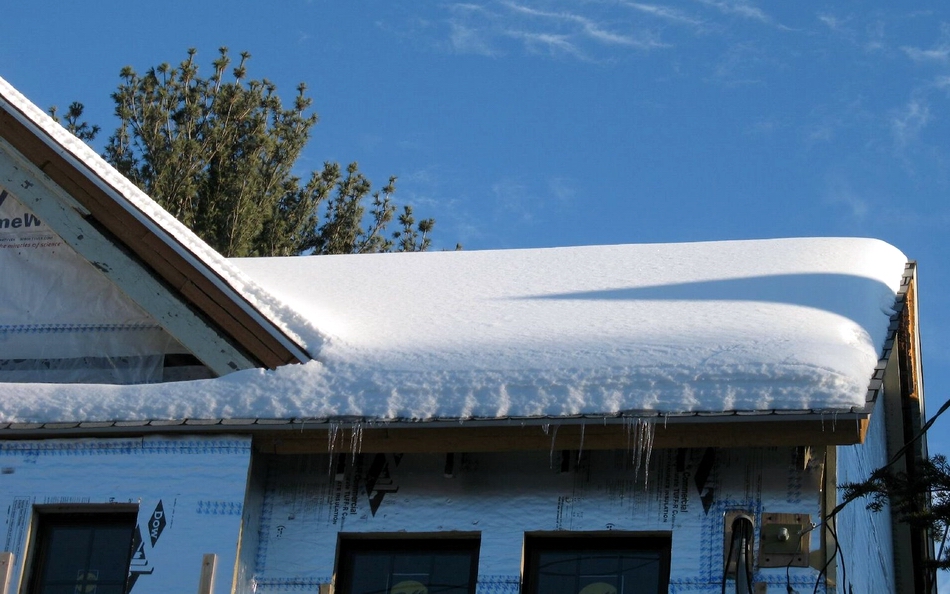Blog Post
Insulation Materials – The Basics

There is no component of a home more important in minimizing energy costs than insulation. Insulation is the material used in walls, ceilings, roofs, and foundations that slows the flow of heat.
Most insulation works by trapping air in tiny pockets--and it is the air that actually does the insulating. If you could keep air perfectly still and didn't have solid materials that heat also conducts through (like fibers or cell walls), the air would insulate to about R-5.5 per inch. (R-value is a measure of resistance to heat flow; the higher the number, the lower the heat flow.) With fiberglass insulation, the glass fibers create air pockets that impede air movement; higher-density fiberglass insulates better, because the air pockets are smaller and air molecules have more trouble moving around. Cellulose insulation works the same way, though because the air pockets are somewhat smaller, it insulates a little better. Polystyrene relies on a cellular structure, rather than fibers, to trap the air.
Some insulation materials rely on a gas other than air as the insulator. Polyisocyanurate (the foil-faced rigid boardstock you see being installed on walls or roofs) relies on a hydrocarbon blowing agent, and this hydrocarbon is less conductive to heat flow than air. The foil layer helps to keep the hydrocarbon from leaking out and being replaced with air--a process that reduces the R-value of the insulation over time.
Insulation materials are sold in different forms, depending on the material and the application. Details of these materials will be described in subsequent columns, but this quick introduction should convey the significant variety of insulation materials out there. Fiberglass batts are sold in tightly compressed rolls or bundles that are opened up and installed in wall cavities, between rafters, or between joists in the attic or basement. Cellulose is sold in bags that can be fluffed up and poured into attics by homeowners or builders; more commonly a professional contractor blows the insulation into walls or ceilings using specialized equipment. Polyurethane insulation is sprayed into wall or ceiling cavities by professional insulation contractors; both high-density (closed-cell) and low-density (open-cell) formulations are available and used in slightly different ways. Less common professionally installed cavity-fill insulation materials include AirKrete, an inert, foamed magnesium-oxide cement, and a foamed phenolic (phenol-formaldehyde) material usually referred to as a "tripolymer" foam.
Rigid insulation materials include extruded polystyrene, expanded polystyrene, and polyisocyanurate. All of these are sold in boardstock, most commonly 2' by 8' or 4' by 8'. Dow Styrofoam, in its distinctive blue color, and Owens Corning Foamular (in pink, of course) are the most common extruded polystyrene XPS products. Expanded polystyrene (EPS is usually white and often referred to as beadboard; it is produced in many more factories on a smaller scale and is available in a much wider variety of dimensions, thicknesses, and densities. Polyisocyanurate insulation isn't as moisture resistant as polystyrene, so applications are generally limited to wall and roof systems. Due to the low-conductivity hydrocarbon blowing agent, the R-value is higher than any other common insulation material.
While batt insulation and most blow-in or spray-in insulation are installed in wall, ceiling, or roof cavities, boardstock insulation is usually installed on one side or the other of framing members. By installing the boardstock insulation over framing members in this way, it helps control the thermal bridging problem that occurs with cavity-fill insulation--heat moves through the wood or steel framing members more easily than through insulation.
SUPPORT INDEPENDENT SUSTAINABILITY REPORTING
BuildingGreen relies on our premium members, not on advertisers. Help make our work possible.
See membership options »In the next few weeks, I'll go into more detail about the most common (and a few uncommon) insulation materials--and their advantages and disadvantages as to energy savings, cost, installation logistics, and environmental friendliness.
Published August 4, 2008 Permalink Citation
(2008, August 4). Insulation Materials – The Basics. Retrieved from https://www.buildinggreen.com/blog/insulation-materials-–-basics



Add new comment
To post a comment, you need to register for a BuildingGreen Basic membership (free) or login to your existing profile.